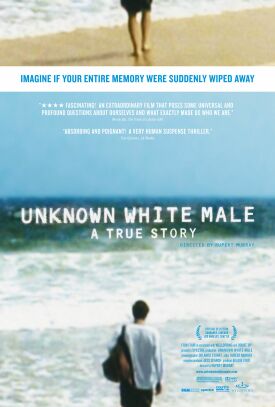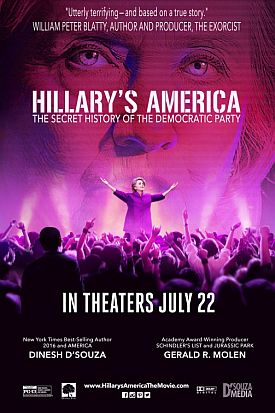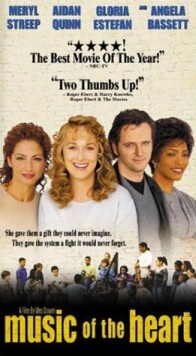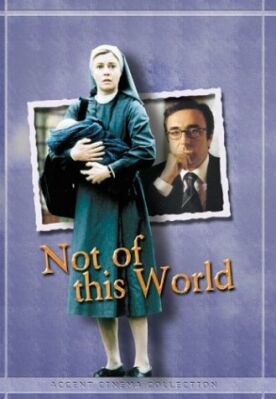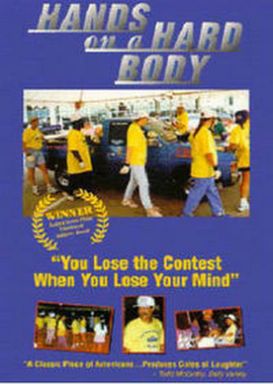Unknown White Male
Early on the morning of July 3, 2003, Doug Bruce, a 30-something, British-born ex-stockbroker studying photography in New York, found himself alone on a subway train at Coney Island without any identification and no idea of who he was. He was only an “unknown white male” for a short time, until a name was found written on a slip of paper in a map he was carrying. Within hours, someone turned up to identify him. To be sure, the intervening few hours were a pretty terrifying time for him, but this movie, a documentary made by Rupert Murray, a friend who had known Doug before “the accident” — is not about a quest for someone’s identity. Rather, it is about the upside of losing it. Doug’s is a rare case of complete psychogenic — that is to say not caused by any known injury or “insult” to the brain — retrograde amnesia. He is thus not a man with no identity but a man with two: old Doug, known to others but not to him, and new Doug, with a certain freedom to reinvent himself that old Doug could never have enjoyed.
As Doug’s sister somewhat wistfully puts it, “he has got a chance to be a completely different person. Not many of us get that chance.” Once he is over the initial shock of having no memory, he can not only refigure what it means to be Doug, he can also re-interview, as it were, his entire stock of friends and family and decide how to reassign them to different levels of intimacy than they might otherwise feel entitled to claim for themselves. One of Doug’s old friends — one who seems to have dropped a little in the hierarchy — looks almost with envy at him. “To be able to meet an old friend and just say ‘piss off’,” he says. “It would be great.” And then there’s getting to experience everything for the first time! Imagine, we are asked, that there are “no clichés or stereotypes; everything’s original.” The film catches new Doug’s first experience of snow and of fireworks for example. On the other hand, his former enthusiasms for London’s Chelsea Football Club and West Indian cricket are completely forgotten, and nobody cares but some of the demoted former friends.
Of course, Doug’s re-branding has worked out pretty well for Mr Murray too, since he won out over several competitors in getting to make this movie, his first feature-length effort. Small wonder, then, that he would find the new Doug “more articulate, serious, focused — as if his senses had been sharpened by a rebooting of the system.” Another guy who’s all in favor of the change is Doug’s photography teacher, Stephen Fraily. Having recapitulated two years’ worth of photographic learning in two months after his “accident,” Doug appears in more recent work, according to the professor, to have “gained enormous depth.” An interesting idea in a photographer, you might think, that of gaining “depth.” Unfortunately, what the prof appears to mean is that old Doug’s work had been “ideologically problematic” — which is how professors of photography talk when they mean “not as left-wing as I am.” New Doug now turns out sad portraits like sausages, and Mr Fraily eats them up. “In a sense they’re all self-portraits,” he says. How true. How very true.
An obvious cheerleader for new Doug is the girlfriend he has acquired since the watershed loss of memory. Narelle, a strapping Australian lass, is understandably just a bit worried about what might happen if “he” — i.e. old Doug — should one day come back? “Will he love me?” she wonders. From her point of view, new Doug is just “a loving, beautiful, wonderful person,” she tells the camera while new Doug makes like old Doug and tries to disappear. “He has no faults,” she says and pauses: “Yet.” The faults should they ever turn up, will doubtless be the faults of old Doug, curse him. New Doug isn’t even sure he wants him back.
I think it would have been interesting to compare Narelle’s views of new Doug with those of Magda, the rather prettier (to my taste) ex-girlfriend who came back from Europe in the early days of Doug’s memory loss and “took control of the whole medical situation.” She also compiled “a list of people you know around the world” so that Doug could re-attach himself to them — or not, as he chose. But then she drops out of the film. Having had an eight-year relationship with old Doug, she could have contributed an invaluable perspective on new Doug, nearly two years after the changeover, if only to ratify the general consensus that he’s a heck of an improvement. It wouldn’t be an unheard-of judgment for an ex-girlfriend to make, after all.
The fact that she doesn’t get to make it is a reminder that new Doug’s control of access to his story has been what has been guiding that story so that new Doug was bound to come out so triumphantly on top. Serious consideration of philosophical questions of identity thus has a predetermined upbeat conclusion. In other words, Mr Murray’s film is doing what memory does — and what photography does too, for that matter — which is to shape reality to the demands of a controlling intelligence or ideology. We all get a certain amount of that control in relation to our own memories, but Doug, having by luck or fate managed to jettison all of his, gets a lot more than most of us. And then he gets to make it official, as it were, in Mr Murray’s movie. This doesn’t seem quite fair, somehow.
Discover more from James Bowman
Subscribe to get the latest posts to your email.

